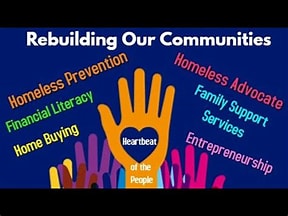
The COVID-19 pandemic turned our world upside down. It messed with our daily lives and how we connect with each other. For over a year, many people had to stay apart. We missed out on hanging out with friends, family, and neighbors. As we start to get back to normal, rebuilding our communities isn’t just about going back to how things were. It’s a chance to build better, stronger networks for the future.
How the Pandemic Affected Us
Before the pandemic, life moved at a steady pace. People were busy with work and their own lives. Then COVID hit. Suddenly, many felt lonely, cut off, and missed those face-to-face chats. Some dealt with loss, whether it was losing loved ones or just the everyday routines they enjoyed.
These struggles hit some people harder than others. Elderly folks and those in underserved areas often found themselves isolated. Many stepped up to help. Communities found new ways to connect, from video calls to volunteers dropping off groceries. But these new connections were often just temporary.
Getting Back to Local Connections
Now, as rules ease up, we need to focus on our local communities. Rebuilding isn’t the same for everyone. Different places have different needs. But the need for local connections is clear.
During the pandemic, many found comfort in their immediate circles—family, neighbors, and local friends. They leaned on each other for basic help, like sharing food or just listening. This sense of community is crucial for recovery.
Leaders are realizing that building trust and connection is important. They’re focusing on community centers, small businesses, and neighborhood groups. Investing in places where people can meet and help each other can strengthen these bonds.
Supporting Mental Health
Another big part of rebuilding is taking care of our mental health. Anxiety, sadness, and grief have been tough on many. The isolation and stress from the pandemic were hard to bear.
As we move forward, we must put mental health at the top of our list. Communities can help by creating support groups and local networks. These spaces can help people talk about their feelings and find comfort in knowing they’re not alone. Putting mental health services in schools, community centers, and places of worship can make it easier for folks to get help when they need it.
We should also remember the power of kindness and understanding. Everyone has faced different challenges. Some people lost loved ones, while others dealt with job losses. Being compassionate during this time is vital.
The Role of Technology
While in-person connections are key, we can’t ignore technology. During the pandemic, it helped keep us connected when we had to stay apart. Virtual meetings and online events became lifelines.
Going forward, we need to find a balance between online and face-to-face connections. Technology should enhance our interactions, not replace them. Having both in-person and virtual options can help everyone join in, especially those who might have trouble getting out.
Social media can also be useful for organizing community events and sharing info. But we need to use it wisely so that it encourages positive and supportive conversations.
Looking Ahead
Rebuilding after the pandemic isn’t just about going back to how things were. It’s a chance to build a brighter future. We can create communities that are more connected, supportive, and stronger than ever.
The lessons we learned during this tough time can help us create communities where everyone feels valued. By focusing on human connection, mental health, and using technology wisely, we can build a kinder and fairer society for all.
It will take time to rebuild, but it can lead to amazing change. We’ve all been through a lot, but together, we can come out stronger and more united.





